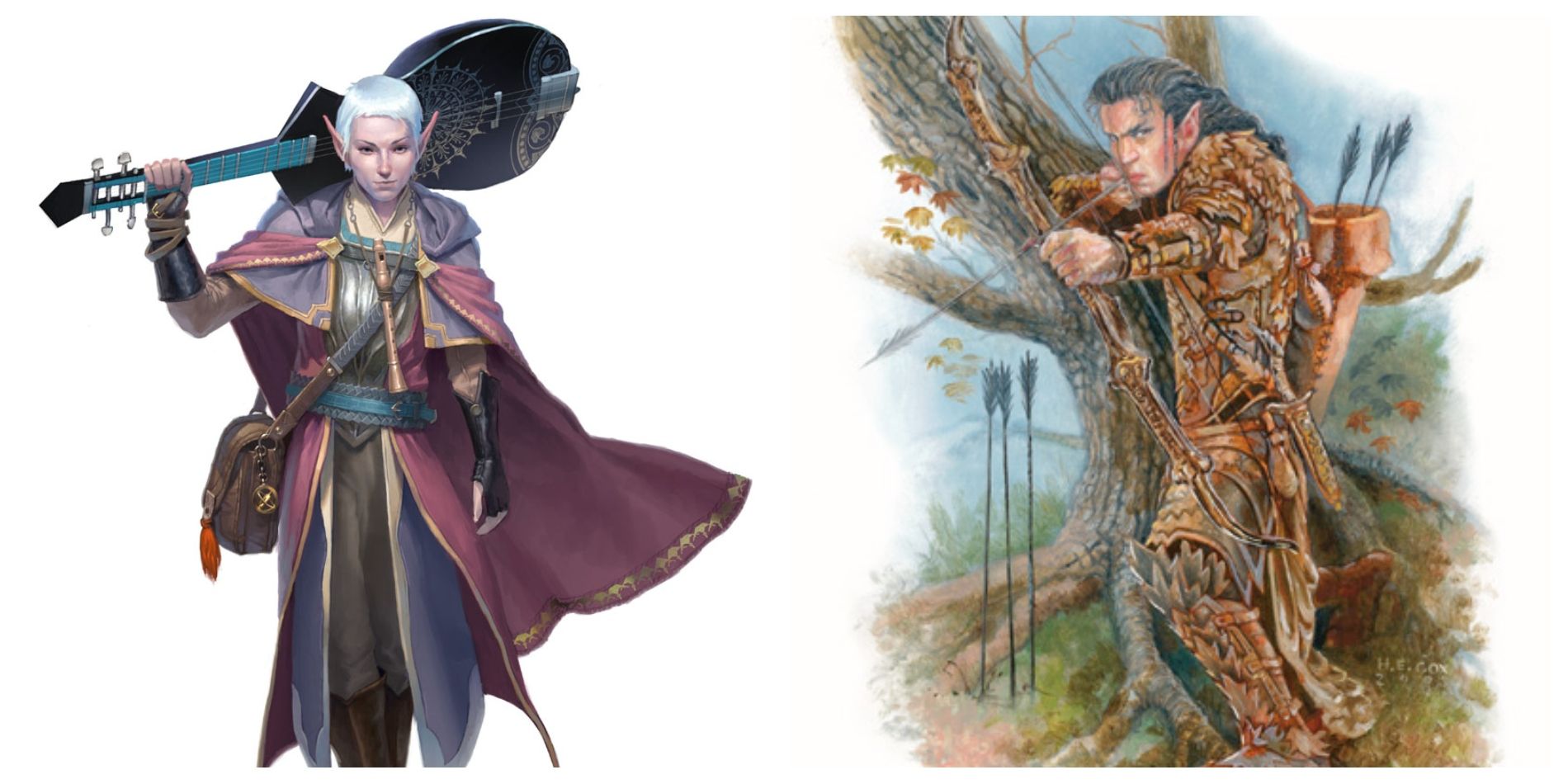The Bard is one of the most versatile classes in fifth edition Dungeons & Dragons, but for skilled players familiar with the game’s spells, it can also be among the most powerful. A combat-focused battle Bard can keep pace with more traditional martial classes and can consistently outdo classes like Ranger and Monk. Bards accomplish this in part with the College of Valor’s weapon and armor proficiencies, its Extra Attack feature, and other classes’ spell lists through the Magical Secrets feature.
A ranged battle Bard functions like the devastating ranged D&D Fighter and Rogue, though it trades spike damage from Action Surge for consistency and the flexibility of a full spellcaster. The Variant Human allows for starting with Crossbow Expert for a bonus action attack option, and to negate the loading property of crossbows as well as disadvantage when firing while engaged in melee. When using point buy, starting with a 16 Dexterity score is critical. In a low-magic game, a 16 Constitution and a 14 Charisma is advisable, but games with access to magic items such as the Amulet of Health might favor a 16 Charisma for improved Bardic abilities and spells, and a 14 Constitution as a fallback for the rare anti-magic field.
Choosing the College of Valor Bard sub-class adds access to martial weapons and medium armor, the latter useful during lower levels until the Bard raises Dexterity high enough for light armor to match the same AC benefits. At level 6 the subclass grants the Extra Attack feature, matching other martial classes' level 5 feature. Selecting Sharpshooter at character level 4 offers an option for damage over accuracy, as well as negating most range and cover penalties. Dexterity should be raised at character levels 8 and 12 to the natural maximum of 20, while the last two feats can go into Warcaster and Resilient: Constitution to optimize Concentration saves, or feats like Lucky and Tough if the party contains adequate defenders.
The Battle Bard Outpaces Many Other D&D Damage-Focused Builds
For Bard levels 1 through 8, the character can make two to three attacks per round with a hand crossbow after using the Bard Fairie Fire spell to cause enemies to grant Advantage on attacks, enabling the damaging Sharpshooter-aided shots to land more often. At level 9, Concentration is better used with Greater Invisibility to provide Advantage. At level 10, the Bard gains access to Magical Secrets, and they can learn the level 5 Ranger spell Swift Quiver. This lets the Bard make two ranged attacks as a bonus action, raising their total number of attacks to four per round. Without being limited to hand crossbows for bonus action attacks, a heavy crossbow (or a longbow in conjunction with Bracers of Archery) can be used for slightly higher average damage. Death Ward is a solid choice for a second Magical Secrets selection.
Later Magical Secrets gained at Bard level 14 can add recovery spells like Heal from the D&D Cleric spell list. The battle Bard provides competitive damage, as well as the benefits of skill Expertise and the robust Bard spell list, which already includes powerful, Concentration-free buffs like Freedom of Movement, Mind Blank, and True Seeing. A battle Bard as early as level 10, with a 20 Dexterity and a +1 Heavy Crossbow, using the Sharpshooter-granted damage boost, and Swift Quiver, will average about 86 damage per round, assuming all four attacks hit. A longbow-based Bard aided by Bracers of Archery will see even higher average damage. At Bard 17, when level 9 spells are available, the D&D Bard spell Foresight provides an excellent 8-hour long, Concentration-free source of Advantage on all attacks, significantly increasing the odds of attacks landing.
A player could also attempt a melee-based D&D battle Bard, replacing Crossbow Expert and Sharpshooter with Polearm Master and Great Weapon Master, choosing Haste instead of Swift Quiver, and swapping Dexterity for Strength, but this requires a thinner spread of base stats, and thus should be reserved for high-magic games. Starting with a single level in Fighter could free up the Resilient feat used for proficiency in Constitution saving throws, and add access to a valuable fighting style, like Archery for ranged battle bards, or Tunnel Fighter for the melee version, as well as heavy armor for melee battle Bards. This places the Bard one level behind on gaining access to Extra Attack and Magical Secrets, however, which is when the Dungeons & Dragons battle Bard truly begins to shine.


